03 May Preparing For a Workplace Disaster… Floods.
Employers have a responsibility to keep their workers safe, even during a disaster. Unfortunately, few employers take the time to assess risk, craft an emergency preparedness plan, or train employees to address workplace emergencies, such as floods. Here are some ways to prepare for a workplace disaster:
Measure Risk
Business risks can vary depending on the location of your company, its size, and the type of work you do. Businesses working with hazardous materials or storing financial or customer information may have to comply with specific state or federal regulations.
Start by doing a thorough risk assessment of your business. Flooding may restrict accessibility and without proper precautions your business could grind to a halt. Identify which staff, equipment, and supplies you need to remain functional, and the suppliers and contractors that are necessary for work.
Also define which areas are most likely at risk of flooding and identify possible methods of reducing or eliminating each risk, those that may make a workplace disaster worse.
Create an Emergency Action Plan
OSHA standards require an emergency action plan for businesses with 10 or more employees, but companies of all sizes can benefit from having one. It protects workers and your business and can ensure your business is up and running as soon as possible after a flood or other disaster.
Typically, a company delegates the task of creating an emergency action plan to an emergency planning team, which includes management and staff. Once they’ve identified risks and established procedures, they create a written policy. This policy includes the chain of command during a disaster, who will dispatch notifications, and who ensures that all employees are safely out of the building.
The planning team distributes the emergency planning policy to management and employees through company resources such as their website, newsletter, and emails. Employees should also have a dedicated number they can call if they are away from their primary workplace to receive instructions.
Dispatch Flood Notifications
It is important that everyone receives a notice of an oncoming flood or other disaster simultaneously and understands what they need to do. Small companies may rely on a siren and phone everyone, but larger enterprises may need to use text messages, a public address system, and other methods to reach everyone.
Using SMS is an inexpensive effective way to notify employees, but you must maintain a current database of employee phone numbers and the employees must keep their phones with them at all times, which isn’t always feasible. However, it may work well for tech-reliant businesses.
Companies should also collect emergency contact information should anyone injure themselves during a flood.
Determine Evacuation Routes
Companies should develop evacuation plans for all facilities so they can get all workers, customers, and visitors out of buildings as quickly as possible. If your company has employees with disabilities, you will also need to consider how they can safely exit the building when necessary. Plans should include locations outside of the facilities to conduct head counts of employees, assess injuries, and coordinate efforts.
Flooding can cause additional problems such as chemicals leaching into the water, fires and explosions, risk of electrocution, drownings, and delayed responses from emergency personnel. Serious flooding can include staying in a sheltered area with emergency ration kits until help can reach them. Ensure at least one person in each facility has first aid training and ration kits at their disposal.
Practice & Refine
A written policy and planned evacuation routes are only worthwhile if people understand and follow them. Emergency training for new and existing employees, including drills, are vital to flood preparedness.
Employees should know where they need to go, whether they need to shut down equipment, and what to take with them. After each drill, identify problem areas and refine the process and policy. Improvements save lives.
Review Insurance Coverage
Flooding is not covered under a standard business insurance policy so it is important you review your coverage with your insurance agent or broker. If your business lies in a National Flood Insurance Program region, they can help you buy a policy and recommend additional coverage since program limits are often too low for companies.
They can also explain additional insurance options such as business interruption insurance, which can provide coverage for lost income and employee wages after a flood. This is often a valuable coverage because it helps your company survive post-flood repairs that can take weeks or months.
Equipment breakdown insurance may also be a viable option for your business if you rely on specialized equipment. Your agent or broker has the experience and knowledge needed to match efficient coverage to affordable premiums. Don’t leave your business at risk, make sure you prepare for a workplace disaster. A flood can devastate an under-protected business.


No Comments